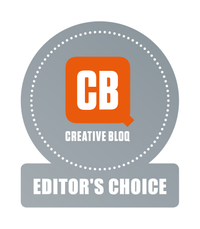Our Verdict
Forget 2-in-1s, this is a 1-in-2: a laptop with two OLED touchscreens that allows you incredible flexibility in how you set it up, means you don’t need to carry a portable external monitor around with you, and comes with enough power and storage to make meaningful creative work on the move not only possible but actually enjoyable. The ZenBook Duo OLED is one of the few times we’ve looked at the price of a £2,000 laptop, then at our bank balance, and thought ‘actually, maybe it is worth that’.
For
- Futuristic form factor
- Powerful components
- Fun to use
Against
- Kind of expensive
- Two screens can drain the battery
- Picky about chargers
Why you can trust Creative Bloq
Whenever anything arrives that’s a little bit different, which offers a hint of a step forward in technology design or function, you immediately start looking for the compromise. In the ASUS Zenbook Duo OLED 2024 model, we found none.
This is a remarkable laptop. One of the very best to have ever passed through the large sliding doors of the Creative Bloq Hardware Labs. The white-coated geeks who toil there amid fountains of dry ice and those crackly plasma balls that were all the rage in the ‘80s searched it all over for flaws, and came up empty. The worst thing we can say about it is that, if you’re using both its OLED screens and have a 1440p ultrawide monitor connected to the HDMI port as well, the mouse pointer can get a bit jumpy as the integrated GPU strains to keep up. That’s it. We’d expected the Duo to have poor battery life, but you’ll get more than 12 hours out of the 75Wh battery when using it in laptop mode, though opening up the second screen will lower this.
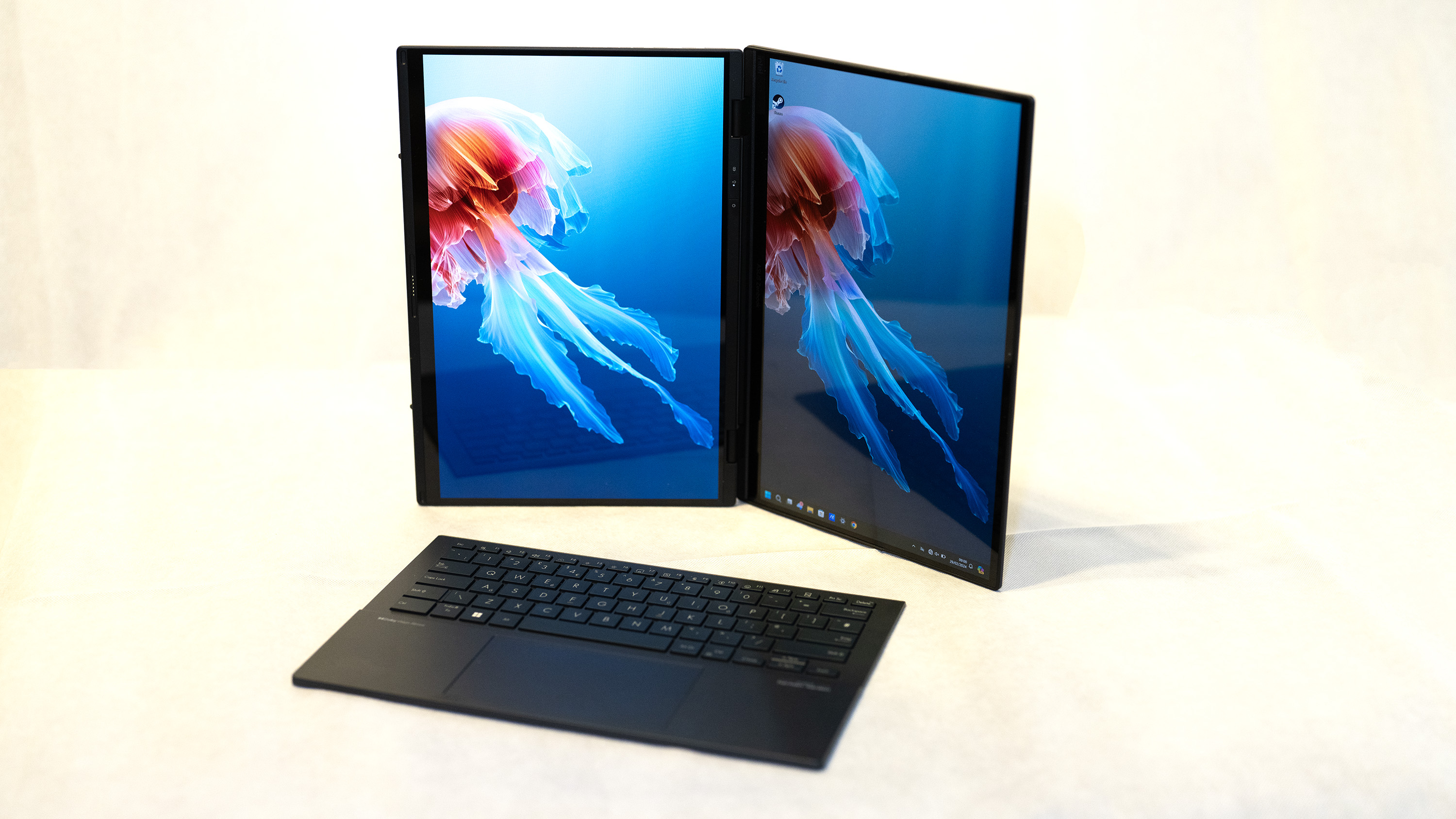
ASUS Zenbook Duo OLED 2024 review: Key specifications
| CPU: | Intel Core Ultra 9 185H |
| GPU: | Intel Arc Graphics |
| RAM: | 32GB |
| Storage: | 2TB SSD |
| Screen: | 2x 14in 2880x1800 120Hz OLED |
| Connectivity: | Wi-Fi 6E, Bluetooth 5.3, 1x USB 3.2 Gen 1 Type-A, 2x Thunderbolt 4, 1x HDMI 2.1, 3.5mm combo jack |
| Dimensions | 31.35 x 21.79 x 1.46cm |
| Weight: | 1.65kg |
ASUS Zenbook Duo OLED 2024 review: Design and build

The new Zenbook Duo takes the classic laptop form factor and twists it in one very exciting way. The device still opens like the suitcase at the end of Pulp Fiction, releasing a glow from within, but here the keyboard lifts away to reveal a second OLED screen below. There's a stand that folds out from the back of this screen, so you can set it up either with one screen above the other, or with the two screens side-by-side in portrait orientation. The keyboard and trackpad then connect via Bluetooth, allowing you to double your screen size and keep working.
All the laptop’s internals are inside the bottom screen, yet despite this the assembled Zenbook isn’t really any thicker than many of the laptops that come across our desks here. It’s perfectly sized to slip in your bag, yet supplies an experience superior to most laptops when you get where you’re going.
Charging is handled via USB-C ports on both the laptop itself and the removable keyboard, though you’ll only need to use the keyboard port if you’re working with it separated from the main machine, as there's a direct connection between the two when they’re docked. We found it was a bit picky about what it charged with - 60W tablet chargers that many laptops are happy with were dismissed as ‘low power’ by a notification, and served to slow the battery drain while using it instead of topping it up. Luckily, a 65W charger is included.
ASUS Zenbook Duo OLED 2024 review: Keyboard and trackpad
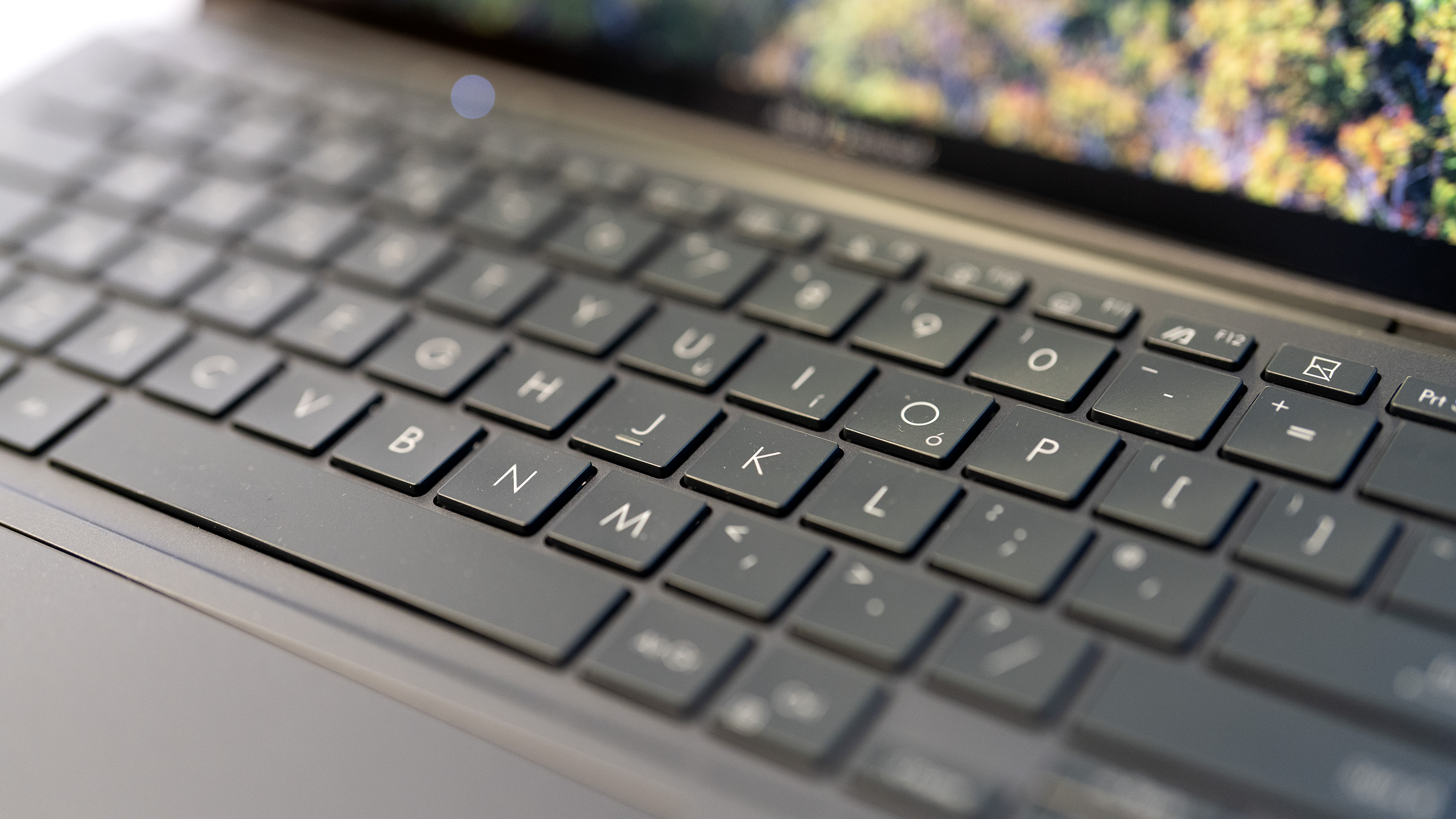
As the keyboard module is detachable and capable of running on its own as a Bluetooth device you would be forgiven for thinking it’s going to be a dreadful experience to use, but the reality is that it’s not all bad. There are better laptop keyboards out there, but they don’t have to accommodate the extra bits that make it removable. Key travel is 1.4mm, and with no attempt to fit a numpad in the keys are nicely sized and legible. There's a plain white backlight, and the power key is hidden away near the hinge, on the body of the laptop rather than on the keyboard. There are some unique keys to aid you in moving content between the screens, which is a nice touch.
The touchpad is smaller than some, but still a good size given that it’s integrated into a removable panel. It’s entirely possible, when using the Zenbook Duo’s screens in their detached mode, to discard the keyboard and use one of your own choice via Bluetooth or USB. That both screens are touchscreens as well means you might not need to connect a mouse, and it’s possible to put the on-screen keyboard on the bottom screen, though you do lose feedback by doing this. What you can’t do is fold it back on itself into a pseudo-tablet - that would clearly be asking too much.
Also in the box is a stylus, the ASUS Pen 2.0, which comes with interchangeable tips and its own short USB-C cable for charging. The pen has three buttons, and cleverly opens up to reveal its charging port. It’s sensitive to 4096 levels of pressure and has a 266Hz sampling rate as it passes across the screen. The nibs are designed to mimic different weights of pencil, from 2H to B, and it has a very natural feel in use. Sadly there's no magnetic attachment point or slot to stow it in, so you’ll have to be careful not to leave it behind.
ASUS Zenbook Duo OLED 2024 review: Performance
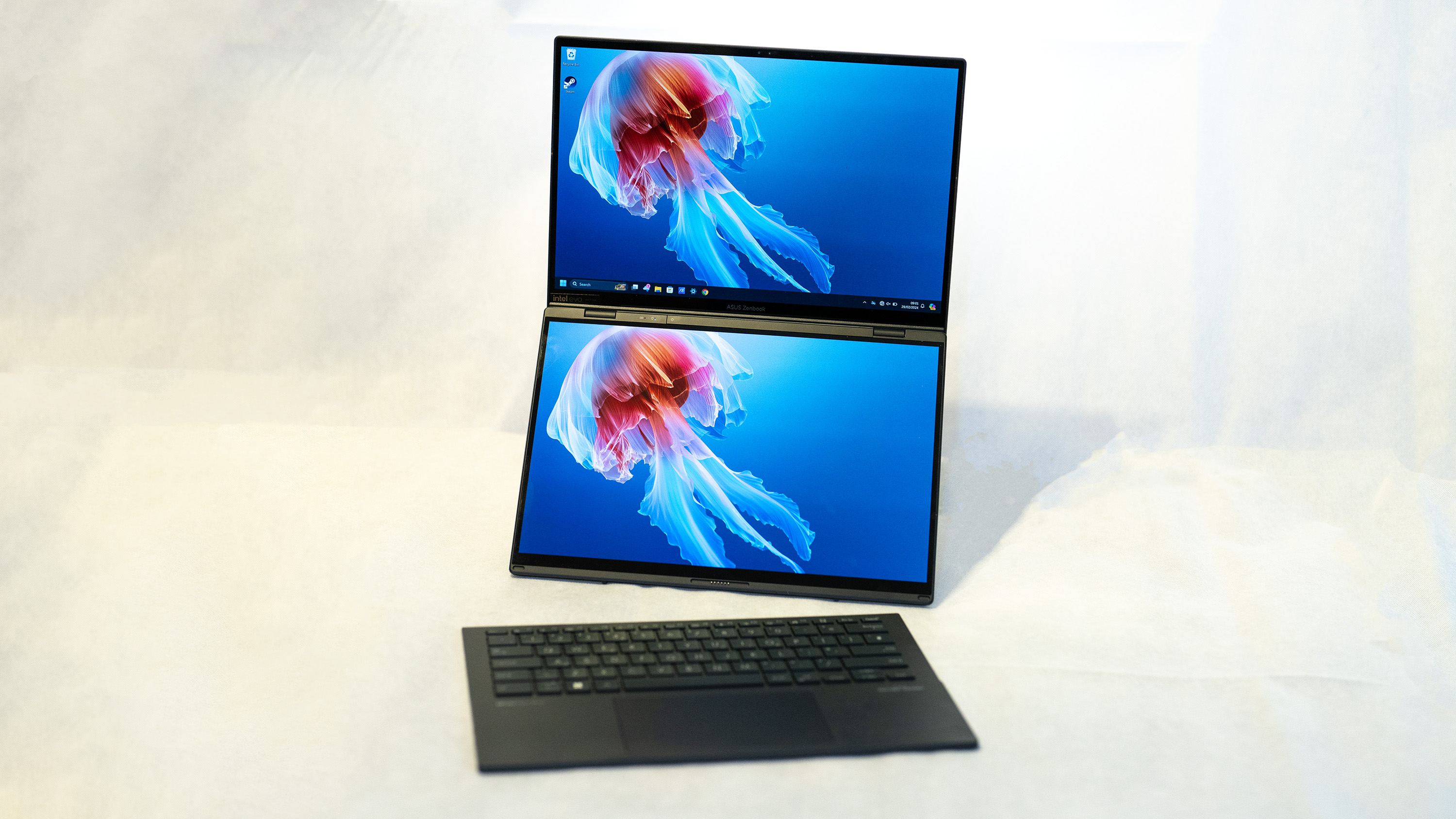
| Cinebench R23: | Single-core: 1,701 | Multi-core: 9,437 |
| Cinebench 2024: | Single-core: 105 | Multi-core: 607 |
| PC Mark 10: | Test: 6,430 | Battery: 12h 20m |
| Geekbench 6: | Single-core: 2,340 | Multi-core: 11,259 |
| Row 4 - Cell 0 | GPU: 29,737 | Row 4 - Cell 2 |
| Handbrake: | 7m 21s | Row 5 - Cell 2 |
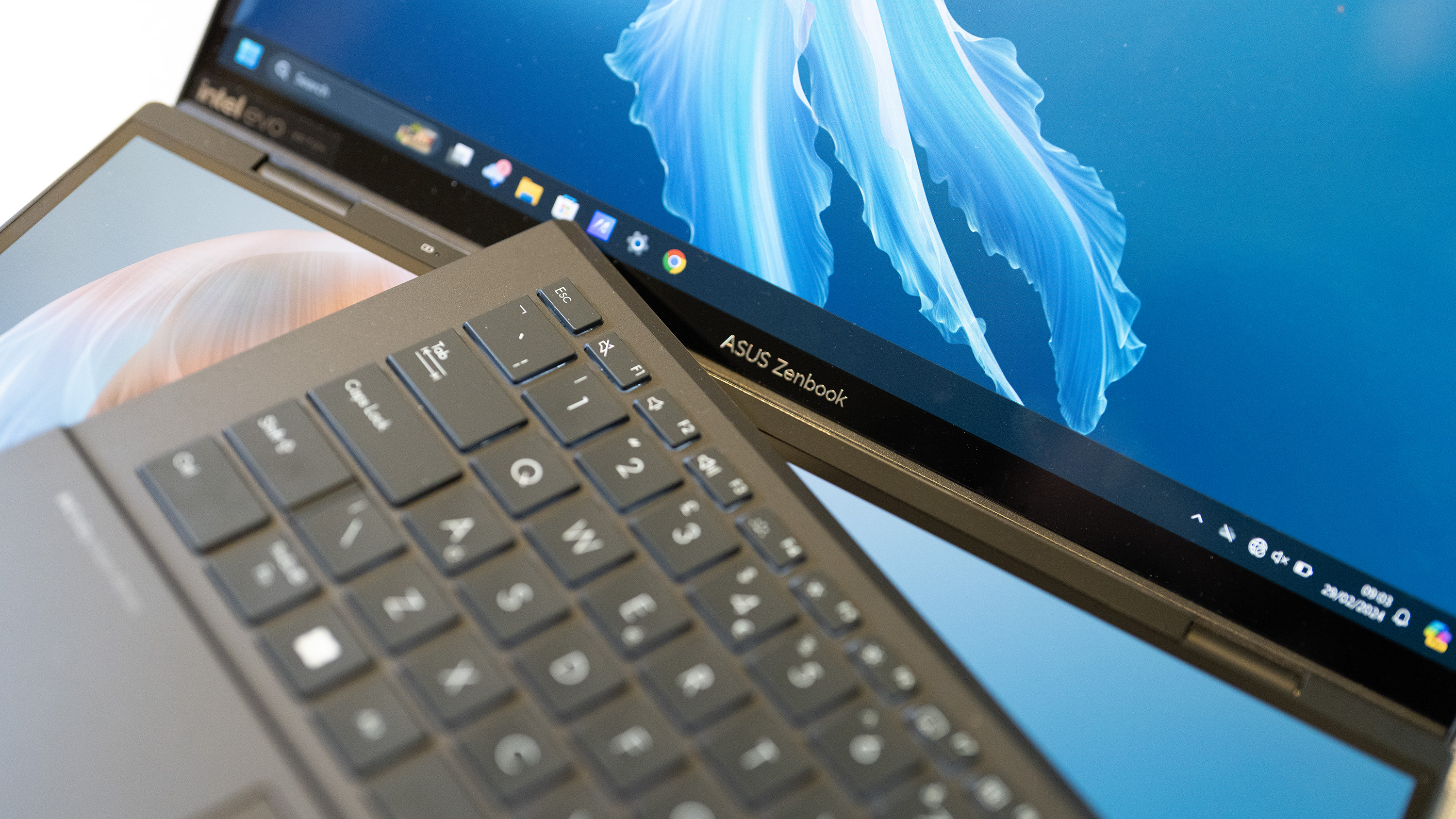
The screen is the big selling point of the Zenbook Duo OLED, and being able to get it out and use both screens, whether in portrait or landscape orientation, feels incredibly futuristic. The fact it looks like a normal laptop before you begin taking it apart and setting it up helps, as it adds a degree of stealth and surprise to its use.
The latest Cinebench 2024 benchmark test is hard on processors, but the Ultra 9 in the Zenbook Duo OLED puts in a score that’s between the Apple M1 and M1 Max, and on a par with desktop i9 chips from previous generations. In use you’ll hear the fan quite often - just downloading games to the laptop through Steam caused it to spin up - but the experience is a snappy one. With dual screens and a detachable keyboard, you tend to sit slightly further away from the Zenbook Duo than you would to a standard laptop, making the noise less noticeable.
The screens perform fairly well, displaying 97% of sRGB, 73% of Adobe RGB and 72% of the P3 colour gamuts. In our testing they hit 395 nits of brightness at 100%, and you get the lovely OLED sharpness and saturation, at the expense of being a little reflective, especially if there are strong light sources behind you.
Despite the fact they offer twice as much screen space as a standard 14-inch laptop, using both the screens of the Zenbook Duo is not without its issues. Unlike a folding phone, where the screen unfurls into an almost seamless expanse, here you definitely have a border between the panels. They are treated as two separate screens in Windows, with the desktop extended across them. There's a rotation sensor that jiggles things about if you decide to go for portrait orientation instead of landscape, and the stand can cope with either position, but you’re still working with a pair of panels instead of one larger one. This means fullscreen apps are never any bigger than they would be on any 14-inch screen, and the extra space is only useful for keeping a web browser or Slack window open on one while you work on the other.
Battery life is a tricky thing to quantify for a device that can be used in a couple of different configurations. With both screens active, endurance is going to go down, and the double-screen configuration is perhaps best saved for times when you’re sat down near a charger. Happily, the Duo works very nicely as a Solo, taking up as much space as any other 14-inch laptop, and we were pleasantly surprised to see it work for over 12 hours with one screen on in our tests.
ASUS Zenbook Duo OLED 2024 review: Price
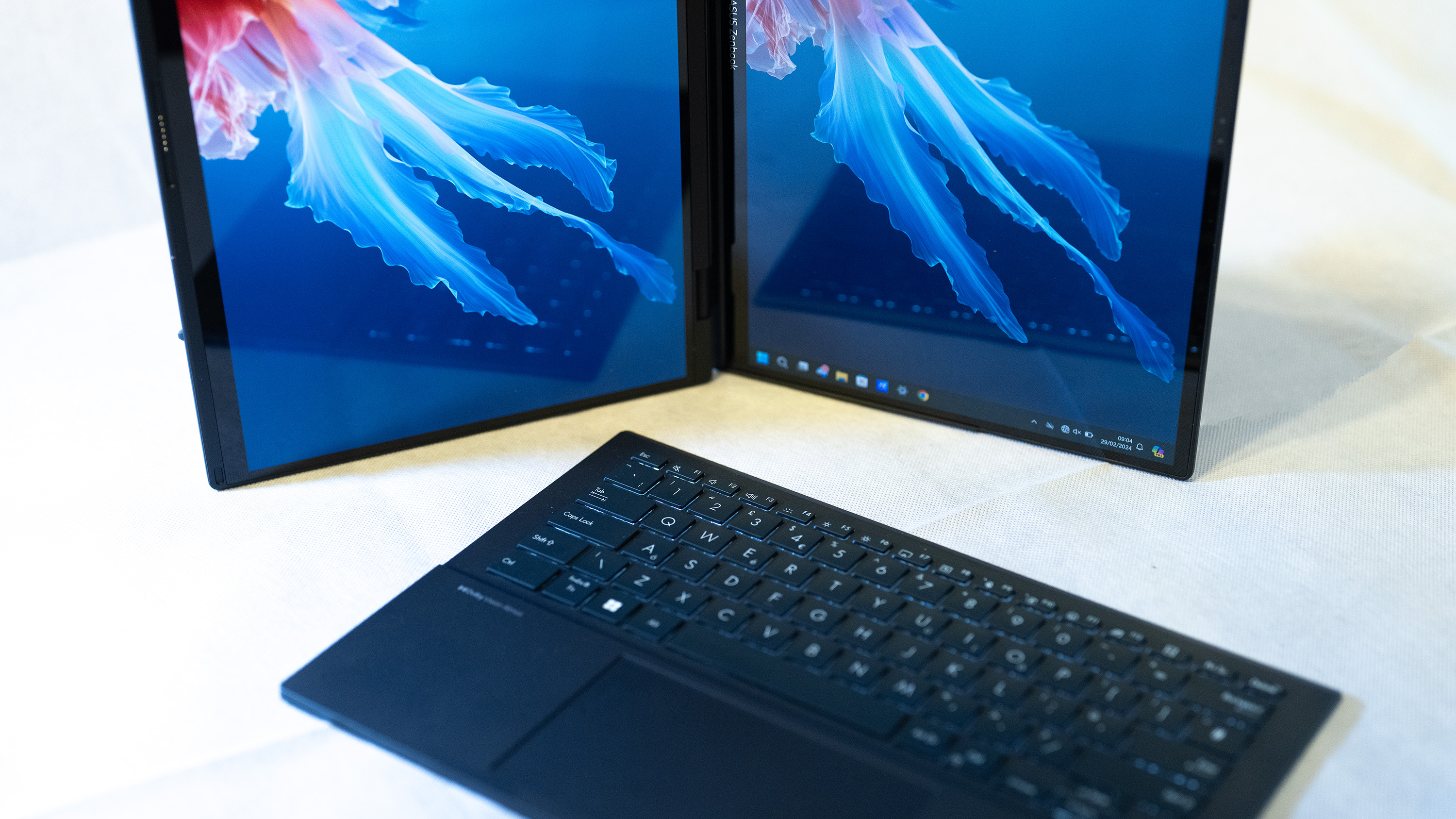
The ASUS Zenbook Duo OLED 2024 starts at £1,699 and goes up to around £2,000 for the model we tested. There's no getting away from the fact that £2,000 is a lot of money. The ASUS Zenbook OLED Duo is MacBook levels of expensive, but doesn’t quite squeeze out M3 levels of performance. It is a unique proposition, however, and offers levels of usability few other portable computers can manage, so perhaps the high price is justified by the looks and questions you get when you set it up on the table in a coffee shop or in a work meeting.
Should I buy the ASUS Zenbook Duo OLED 2024?
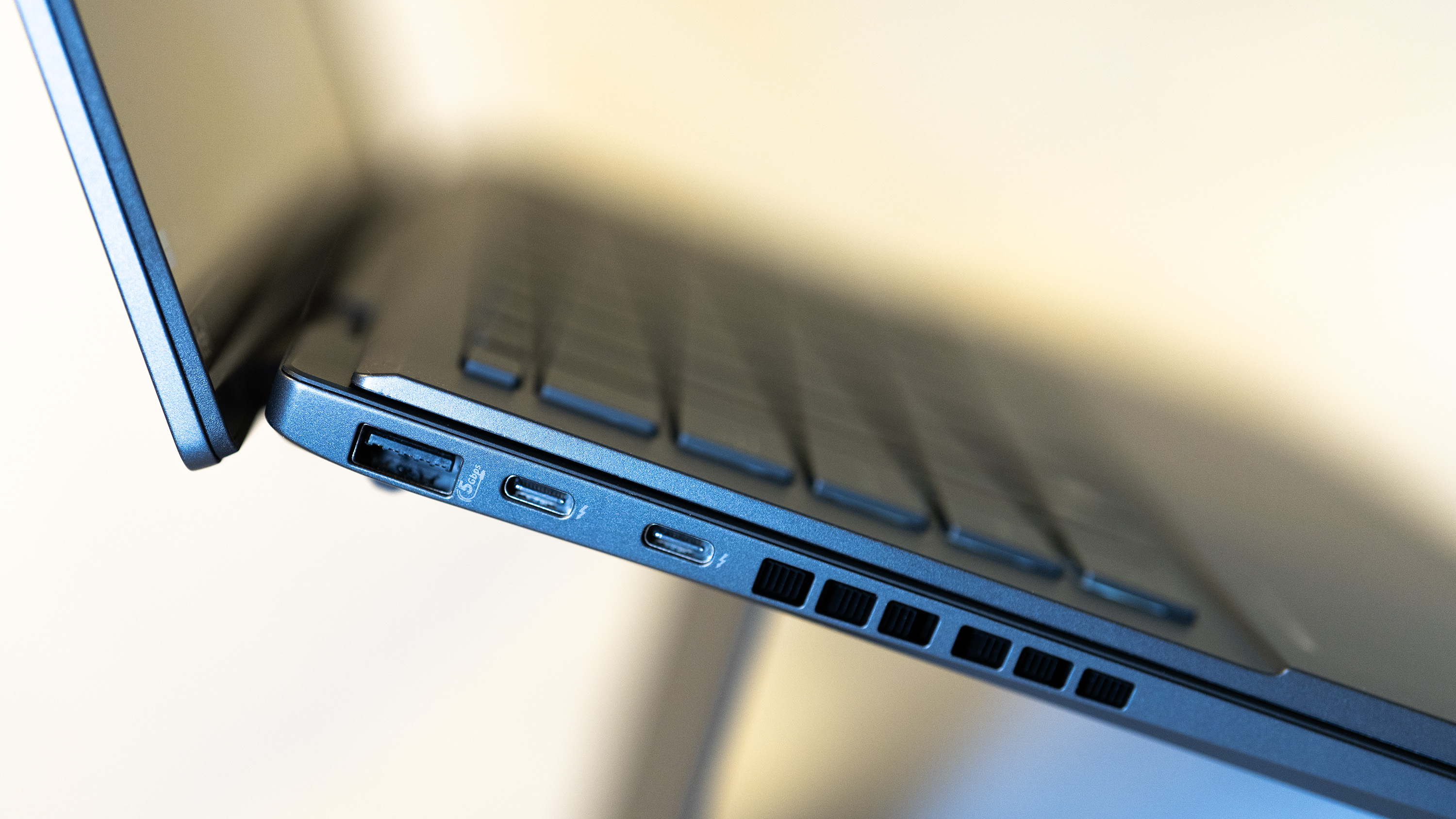
The new ASUS Zenbook Duo OLED has a lot to recommend it. It marries the internals of a high-performance Windows laptop with some excellent engineering and an avant-garde approach to how a laptop screen should function. The pair of touchscreen OLEDS attached to the keyboard module offer something few other laptops can provide, a portable computer that folds up into something indistinguishable from many others but which unfurls into a desktop productivity powerhouse when you need it to. Whether it’s viewing documents side by side, having multiple windows open at the same time, or just showing off to your coworkers and friends, ASUS has produced something that feels like the next evolution in laptop design. Let’s hope it catches on.
out of 10
Forget 2-in-1s, this is a 1-in-2: a laptop with two OLED touchscreens that allows you incredible flexibility in how you set it up, means you don’t need to carry a portable external monitor around with you, and comes with enough power and storage to make meaningful creative work on the move not only possible but actually enjoyable. The ZenBook Duo OLED is one of the few times we’ve looked at the price of a £2,000 laptop, then at our bank balance, and thought ‘actually, maybe it is worth that’.

Ian Evenden has been a journalist for over 20 years, starting in the days of QuarkXpress 4 and Photoshop 5. He now mainly works in Creative Cloud and Google Docs, but can always find a use for a powerful laptop or two. When not sweating over page layout or photo editing, you can find him peering at the stars or growing vegetables.


